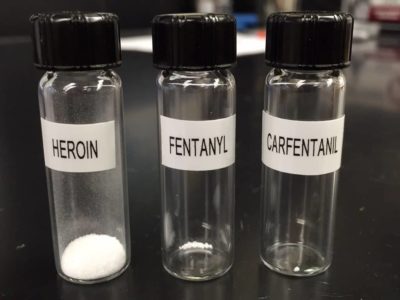
FYL on a drug test stands for Fentanyl. Fentanyl is a commonly abused opiate, recently replacing heroin as the primary drug of choice for opiate addicts.
What is FYL On a Drug Test?
FYL stands for Fentanyl. Fentanyl is a powerful opioid that is used in the treatment for severe pain but is also becoming widely abused. It is often mixed with Heroin to increase potency and lower cost for drug dealers. This trend has caused a dramatic rise in Fentanyl related overdose deaths. Fentanyl is 100 times stronger than morphine.
Fentanyl has a rapid onset and short duration. Withdrawl effects are more severe than heroin. Fentanyl use can be detected for up to 3 days with a fentanyl drug test.
For pain management cancer patients are often prescribed transdermal Fentanyl patches that extend the release of the drug to the blood stream. The dosage of a fentanyl patch is 25-100 micrograms per hour. Common brands are Duragesic, Abstral and Subsys.

Drug addicts defeat the extended release by cutting the patches open, mixing the contents with water and injecting the solution.
Fentanyl is also available in buccal tablets, sublingual tablets and lozenges. Besides cancer patients it is sometimes used as a treatment for breakthrough pain for patients that have a high opiate tolerance.
In street form fentanyl is a gray/white powder that is often mixed with doses of heroin. In 2017 the number of heroin overdose deaths that contained fentanyl and other synthetic opioids surpassed the number of overdose deaths from heroin alone.

Patients that have a positive drug test for fentanyl may be using diverted pharmaceuticals, but it’s more likely they are using heroin that has fentanyl or one of its analogues mixed in.
Dangers of Fentanyl
A therapeutic level of fentanyl and a dangerous amount is very small which makes using fentanyl as a recreational drug very dangerous. Naloxone injections used by EMTs are effective in combating fentanyl overdose, but recently EMTs have reported using 3 or 4 injections to revive patients because the amount of fentanyl or the strength of the analogues were so great a normal dose had no effect.
Besides being mixed with heroin and sold in powder form fentanyl is also pressed into counterfeit pharmaceuticals that resemble popular street opiates. The most common form is counterfeit 30mg oxycodone pills, but drug dealers also have been busted with counterfeit xanax, counterfeit OxyContin and several other types of pills that are pressed with molds.

Drug dealers aim to include enough fentanyl to mimic the high that the user would feel from taking the pill they are counterfeiting, but due to the potency of fentanyl the result is usually much weaker or much stronger than the pill it is based on.
Fentanyl and its analogues are being studied and sometimes deployed tactically by military and law enforcement. On October 23, 2002 during the Moscow Hostage crisis Russian authorities used a fentanyl analogue gas to subdue Chechan terrorists and resolve the incident. The gas ended up kiling approximately 137 of the more than 800 hostages that were being held.
Xylazine Used as a Cutting Agent
Manufacturers and drug dealers are increasingly turning to the drug xylazine to increase the effects of fentanyl for the end user. Unlike fentanyl, xylazine is not an opiate and doesn’t react to Narcan during an overdose.
In 2022 the DEA found that in 2022 23% of fentanyl powder and 7% of fentanyl pills contained xylazine.
Side Effects of Fentanyl
Fentanyl’s side effects are much like the side effects of other powerful opioids.
- abdominal or stomach pain
- blurred vision
- chest pain
- clumsiness or unsteadiness
- confusion
- constipation
- decreased urine
- dizziness
- drowsiness
- dry mouth
- headache
- increased thirst
- irregular heartbeat
- lightheadedness
- loss of appetite
- mood changes
- muscle twitching or jerking
- nausea
- numbness or tingling in the hands, feet, or lips
- pale skin
- rapid breathing
- respiratory depression
- sneezing
- sunken eyes
- swelling
- tightness in the chest
- unusual tiredness or weakness

